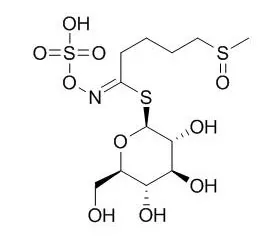| Kinase Assay: |
| World J Gastroenterol. 2017 Jun 21;23(23):4146-4157. | | Antioxidant dietary approach in treatment of fatty liver: New insights and updates.[Pubmed: 28694655] | Non-alcoholic fatty liver disease (NAFLD) is a common clinicopathological condition, encompassing a range of conditions caused by lipid deposition within liver cells. To date, no approved drugs are available for the treatment of NAFLD, despite the fact that it represents a serious and growing clinical problem in the Western world. Identification of the molecular mechanisms leading to NAFLD-related fat accumulation, mitochondrial dysfunction and oxidative balance impairment facilitates the development of specific interventions aimed at preventing the progression of hepatic steatosis.
METHODS AND RESULTS:
In this review, we focus our attention on the role of dysfunctions in mitochondrial bioenergetics in the pathogenesis of fatty liver. Major data from the literature about the mitochondrial targeting of some antioxidant molecules as a potential treatment for hepatic steatosis are described and critically analysed. There is ample evidence of the positive effects of several classes of antioxidants, such as polyphenols (i.e., resveratrol, quercetin, coumestrol, anthocyanins, epigallocatechin gallate and curcumin), carotenoids (i.e., lycopene, astaxanthin and fucoxanthin) and glucosinolates (i.e., Glucoraphanin, sulforaphane, sinigrin and allyl-isothiocyanate), on the reversion of fatty liver. Although the mechanism of action is not yet fully elucidated, in some cases an indirect interaction with mitochondrial metabolism is expected. We believe that such knowledge will eventually translate into the development of novel therapeutic approaches for fatty liver. | | Mutat Res. 2006 Mar 20;595(1-2):125-36. | | Glucoraphanin, the bioprecursor of the widely extolled chemopreventive agent sulforaphane found in broccoli, induces phase-I xenobiotic metabolizing enzymes and increases free radical generation in rat liver.[Pubmed: 16442570 ] | Epidemiological and animal studies linking high fruit and vegetable consumption to lower cancer risk have strengthened the belief that long-term administration of isolated naturally occurring dietary constituents could reduce the risk of cancer. In recent years, metabolites derived from phytoalexins, such as Glucoraphanin found in broccoli and other cruciferous vegetables (Brassicaceae), have gained much attention as potential cancer chemopreventive agents.
METHODS AND RESULTS:
The protective effect of these micronutrients is assumed to be due to the inhibition of Phase-I carcinogen-bioactivating enzymes and/or induction of Phase-II detoxifying enzymes, an assumption that still remains uncertain. The protective effect of Glucoraphanin is thought to be due to sulforaphane, an isothiocyanate metabolite produced from Glucoraphanin by myrosinase. Here we show, in rat liver, that while Glucoraphanin slightly induces Phase-II enzymes, it powerfully boosts Phase-I enzymes, including activators of polycyclic aromatic hydrocarbons (PAHs), nitrosamines and olefins. Induction of the cytochrome P450 (CYP) isoforms CYP1A1/2, CYP3A1/2 and CYP2E1 was confirmed by Western immunoblotting. CYP induction was paralleled by an increase in the corresponding mRNA levels.
Concomitant with this Phase-I induction, we also found that Glucoraphanin generated large amount of various reactive radical species, as determined by electron paramagnetic resonance (EPR) spectrometry coupled to a radical-probe technique.
CONCLUSIONS:
This suggests that long-term uncontrolled administration of Glucoraphanin could actually pose a potential health hazard.
|
|






 Cell. 2018 Jan 11;172(1-2):249-261.e12. doi: 10.1016/j.cell.2017.12.019.IF=36.216(2019)
Cell. 2018 Jan 11;172(1-2):249-261.e12. doi: 10.1016/j.cell.2017.12.019.IF=36.216(2019) Cell Metab. 2020 Mar 3;31(3):534-548.e5. doi: 10.1016/j.cmet.2020.01.002.IF=22.415(2019)
Cell Metab. 2020 Mar 3;31(3):534-548.e5. doi: 10.1016/j.cmet.2020.01.002.IF=22.415(2019) Mol Cell. 2017 Nov 16;68(4):673-685.e6. doi: 10.1016/j.molcel.2017.10.022.IF=14.548(2019)
Mol Cell. 2017 Nov 16;68(4):673-685.e6. doi: 10.1016/j.molcel.2017.10.022.IF=14.548(2019)